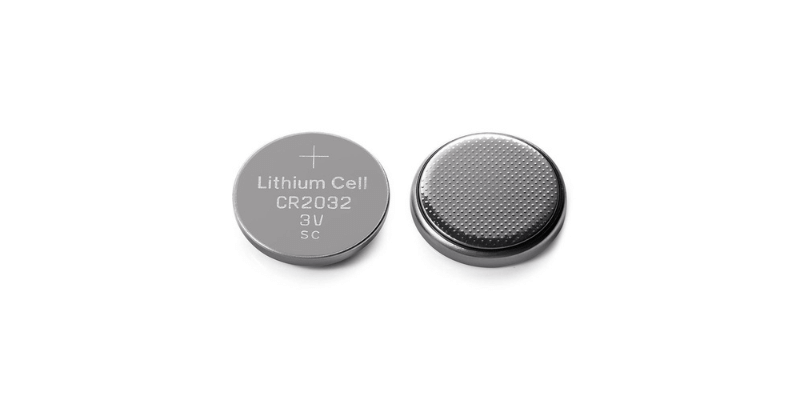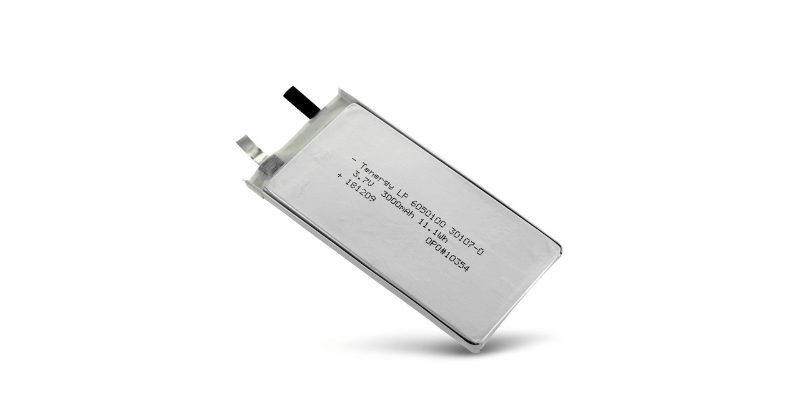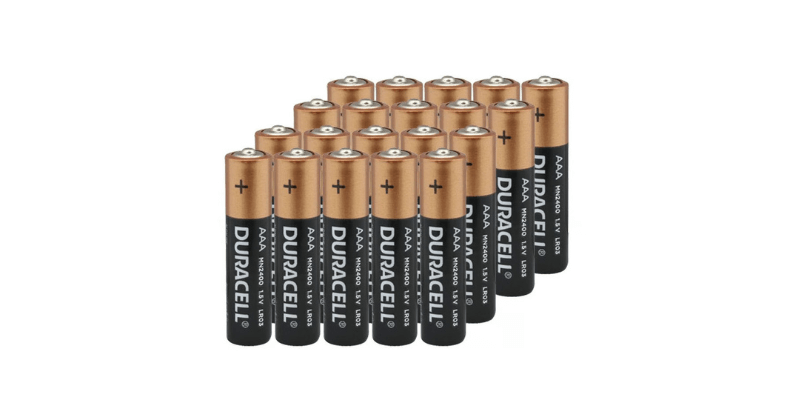Não há dúvida de que as baterias do seu telefone são diferentes das do seu carro elétrico. O aplicativo geralmente determina o tipo e o tamanho necessário. Hoje exploraremos as várias baterias disponíveis e como selecionar o melhor tamanho de bateria para o seu sistema.
Formas de células de bateria
As células da bateria vêm em quatro formatos comuns: botão ou moeda, polímero ou bolsa, prismática e cilíndrica. Cada formato difere em tamanho e química para atender a diversas aplicações.
Células menores são frequentemente conectado em série ou paralelo para criar baterias maiores. Por exemplo, as baterias de lítio de ciclo profundo são frequentemente compostas por múltiplos células cilíndricas ou prismáticas.
Células de botão
Também conhecidas como células tipo moeda, células-botão são baterias pequenas e redondas que lembram moedas.
Alojados em uma caixa de metal, eles vêm em tamanhos padrão com base no diâmetro e na espessura.
Por exemplo, a célula CR2032 tem 20 mm de largura e 3,2 mm de espessura.
Normalmente não recarregáveis, as células-botão são comuns em pequenos eletrônicos que requerem energia mínima. Seu tamanho pequeno os torna ideais para dispositivos portáteis ou vestíveis, como relógios, chaveiros de carros, aparelhos auditivos, ponteiros laser e partidas remotas.

Células de polímero
Bolsa, ou células de bolsa, lançadas em 1995, não possuem um invólucro externo rígido e são seladas em uma bolsa de alumínio. Seu eletrólito flexível permite perfis finos e formatos personalizados.
Embora ofereçam alta eficiência de embalagem e densidade energética, as células da bolsa são propensas a riscos de inchaço e penetração.
Células de polímero de lítio padrão são comumente usadas em dispositivos portáteis como telefones celulares, tablets e laptops. As células poliméricas curvas são adequadas para dispositivos vestíveis, enquanto as células poliméricas de grande formato são utilizadas em Sistemas de armazenamento de energia (ESS) e veículos elétricos.

Células prismáticas
As células prismáticas são embaladas em invólucros duráveis de alumínio ou aço e vêm em tamanhos padrão limitados com base nas dimensões. Seu design discreto melhora a utilização do volume em baterias, mas sua produção pode ser cara.
As células prismáticas também têm um gerenciamento térmico menos eficiente, um ciclo de vida mais curto do que as células cilíndricas e podem inchar.
Hoje, as células Li-prismáticas são usadas em dispositivos como telefones e laptops, bem como em formatos maiores para veículos elétricos e híbridos.

Células Cilíndricas
Células cilíndricas, como 18650 (18 mm de diâmetro, 65 mm de comprimento), 26650 (26 mm de diâmetro, 65 mm de comprimento) e 21700 (21 mm de diâmetro, 70 mm de comprimento), são as baterias recarregáveis de íon de lítio mais populares.
Fechadas em uma lata de metal, essas células são simétricas e eficientes, minimizando o estresse e a pressão.
Com maior densidade de energia do que as células planas, as células cilíndricas são versáteis e preferidas para configurações multicélulas em diversas aplicações, incluindo médica, militar, eletrônicos de consumo e veículos elétricos. Eles são robustos e oferecem maior densidade de energia quando usados em baterias, o que os torna a melhor escolha para muitos setores.

Química da bateria, tensões e amperes
Química da Bateria
Existem quatro produtos químicos principais para baterias: chumbo-ácido, níquel-cádmio (Ni-Cd), níquel-hidreto metálico (Ni-MH) e íon-lítio, cada um com vários subprodutos químicos.
A principal diferença entre esses produtos químicos é a densidade de energia. As baterias de íon-lítio têm a maior densidade de energia, seguidas por Ni-MH, Ni-Cd e chumbo-ácido. Maior densidade de energia permite baterias menores e mais leves.
No entanto, outros fatores são importantes na escolha da química da bateria.
Por exemplo, as baterias de chumbo-ácido são excelentes como baterias de partida devido à sua alta amplificadores de partida a frio (CCA), tornando-as melhores para aplicações iniciais do que as baterias de íon de lítio.

Tensão da bateria
As baterias variam não apenas em tamanho físico, mas também em voltagem. Por exemplo, as baterias AA e AAA geralmente têm uma voltagem de 1,5 volts, enquanto algumas baterias de ciclo profundo podem atingir até 48 volts.
Aqui estão as tensões nominais de bateria mais populares:
- NiCd e NiMH: 1,20 V/célula para aplicações de consumo
- ácido de chumbo: 2V/célula
- LiFePO4: 3,2 V/célula
- íon de lítio: 3,60 V/célula
- ciclo profundo: 12V
- RVs, carrinhos de golfe e barcos: 24V, 36V, 48V
Uma diretriz útil a ser lembrada é que requisitos de energia mais elevados para uma aplicação exigem uma tensão de bateria maior. A potência de saída de uma bateria é determinada multiplicando suas medições de tensão e corrente (volts x amperes = watts). Em aplicações de alta potência, o uso de uma tensão mais alta pode reduzir a corrente, o que permite o uso de cabeamento menor.

Amplificadores de bateria
O principal determinante do tamanho de uma bateria é a sua capacidade, que é medida em amperes-hora (Ah).
Esta capacidade é calculada multiplicando a corrente (em amperes) pelo tempo de funcionamento (em horas).
Por exemplo, uma bateria de 100 Ah pode fornecer aproximadamente dois amperes por 50 horas ou quatro amperes por 25 horas. É importante observar que a classificação de capacidade serve como uma aproximação e pode não ser exata.

Tamanhos comuns de baterias domésticas
As baterias AA e AAA são comumente usadas em pequenos eletrônicos domésticos devido ao seu tamanho compacto e tensão nominal de 1,5 volts.
As pilhas AAA, por serem menores que as pilhas AA, geralmente têm metade da capacidade. Essas baterias são frequentemente encontradas em dispositivos como controles remotos e pequenas lanternas que requerem energia mínima.
Por outro lado, as baterias C e D são escolhas populares para eletrodomésticos maiores. As baterias D, maiores que as baterias C, fornecem aproximadamente 50% mais capacidade e são comumente usadas em aplicações de alta potência, como aparelhos de som portáteis e eletrônicos industriais que necessitam de tempos operacionais mais longos.
Por último, as baterias de 9 volts, também conhecidas como baterias E, têm formato retangular e são comumente usadas para alimentar dispositivos como detectores de fumaça em residências.
Quais são os tamanhos dos grupos de baterias?
O Conselho Internacional de Baterias (BCI) estabelece tamanhos de grupos padrão para baterias recarregáveis usadas em carros, barcos e trailers. Esses tamanhos de grupo referem-se às dimensões físicas das baterias, mas não indicam sua capacidade.
Geralmente, baterias maiores tendem a ter capacidades maiores; no entanto, nem sempre é esse o caso. Existem mais de 50 tamanhos diferentes de grupos de baterias disponíveis. Os mais populares estão listados abaixo:
| Tamanho do grupo | C x L x A (mm) |
| Bateria Grupo 24 | 260 x 173 x 225 |
| Bateria Grupo 27 | 306x173x225 |
| Bateria Grupo 31 | 330 x 173 x 240 |
| Bateria Grupo 34 | 260 x 173 x 200 |
| Bateria Grupo 35 | 230 x 175 x 225 |
| Bateria Grupo 51 | 238x129x223 |
| Bateria Grupo 65 | 306x192x192 |
| Bateria Grupo 78 | 260x180x186 |
Alguns de nossos clientes acreditam que um número de grupo maior significa uma bateria maior, mas isso não é verdade. Como você pode ver acima, uma bateria do Grupo 31 é, na verdade, maior do que uma bateria do Grupo 51.
Baterias para carros, trailers, barcos e carrinhos de golfe
Não existe um tamanho de grupo de bateria universal que sirva para todos os carros, trailers, barcos ou carrinhos de golfe. Os fabricantes de veículos fornecem recomendações para ajudar a selecionar o tamanho apropriado da bateria.
Para veículos de passageiros, os tamanhos comuns de grupos de baterias incluem 24, 27, 34, 35, 48, 49, 65 e 78. RVs e barcos costumam utilizar tamanhos semelhantes.
As baterias de carrinhos de golfe são categorizadas com “CG”. O mais comum é o GC2 (6 volts), junto com opções como GC8 (8 volts) e GC12 (12 volts).

Escolhendo o tamanho certo da bateria para o seu sistema
Escolher o tamanho certo da bateria envolve mais do que apenas selecionar a maior que você pode pagar. Considere fatores como necessidades de energia e espaço disponível.
Os especialistas da Holo Battery podem ajudar a determinar o tamanho necessário da bateria, fornecendo aos seus dispositivos’ consumo de energia para calcular amperes-hora necessários. Contate nossos especialistas técnicos hoje, eles ficam felizes em ajudar!

